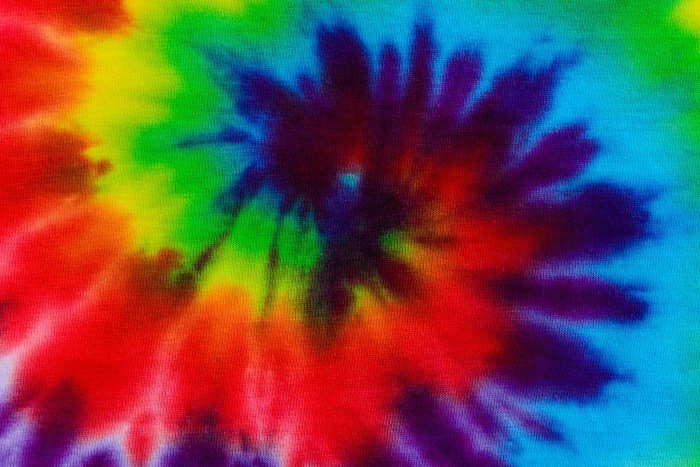Anyone who has ever been to summer camp or dressed up as a hippie for Halloween has created a tie-dye shirt. But how does tie dye work?
History:
Tie dying has been around long before the 1960s and 1970s – the decades many people associate with the colorful trend. Before the term “tie dye” became popular, the practice was known as Shibori, a Japanese term that includes a wide variety of dyeing techniques. The practice has been used by many different cultures over the course of the past 6,000 years.
How To Tie Dye:
Nowadays, tie dye works by taking a white (or light colored) article of clothing, folding or crumpling it up, and putting different colored dyes on sections of the clothing. After letting the piece dry, you unfold it to reveal a crazy, colorful pattern.
The Science Behind Tie Dying:
So how does a boring white t-shirt turn into a work of art? Science, of course!
When you introduce a typical piece of clothing made of cotton or linen to a colored dye, fiber reactive dyes attach to cellulose fibers using a covalent bond. The dye molecule actually becomes a part of the t-shirt cellulose molecule. The molecules hold a “chromophore,” which absorbs different spectrums of light, allowing only certain spectrums to reflect.
Covalent bonds, which share electrons, are one of the most basic and strongest types of chemical reactions. They become stronger when the pH level of the clothing is raised, which is why many people pre-soak pieces to be tie dyed in Soda Ash. The Soda Ash soaks up the protons from the hydrochloric acid in the dye and raises the pH level to about 10.5, allowing the dyes to work at room temperature.
The reaction can also be aided with heat. Some tie-dyers even microwave their artwork.
After leaving the clothing alone for 24 hours, the bonding on the cellulose should be complete.
Not Bonding:
How tie dye works is much better understood today than it was when the practice was popular in the ’60s and ’70s. Back then, the spirals and patterns were made with retail household dyes. To make these dye work on different fibers, they were composed of several different dyes, which made them less effective. That’s why many people had towels and socks that were far from their original color after they went through the washing machine!
Nowadays, we use Procion MX fiber reactive dyes, a class of dyes effective on cellulose fibers such as cotton, hemp, rayon, and linen. They form the covalent bonds that are very hard to break, leaving all your laundry the correct color.
Maybe you could incorporate how tie dye works into a science fair project or chemistry class. (At least you’ll get some cool shirts out of it!)








Leave A Comment
You must be logged in to post a comment.